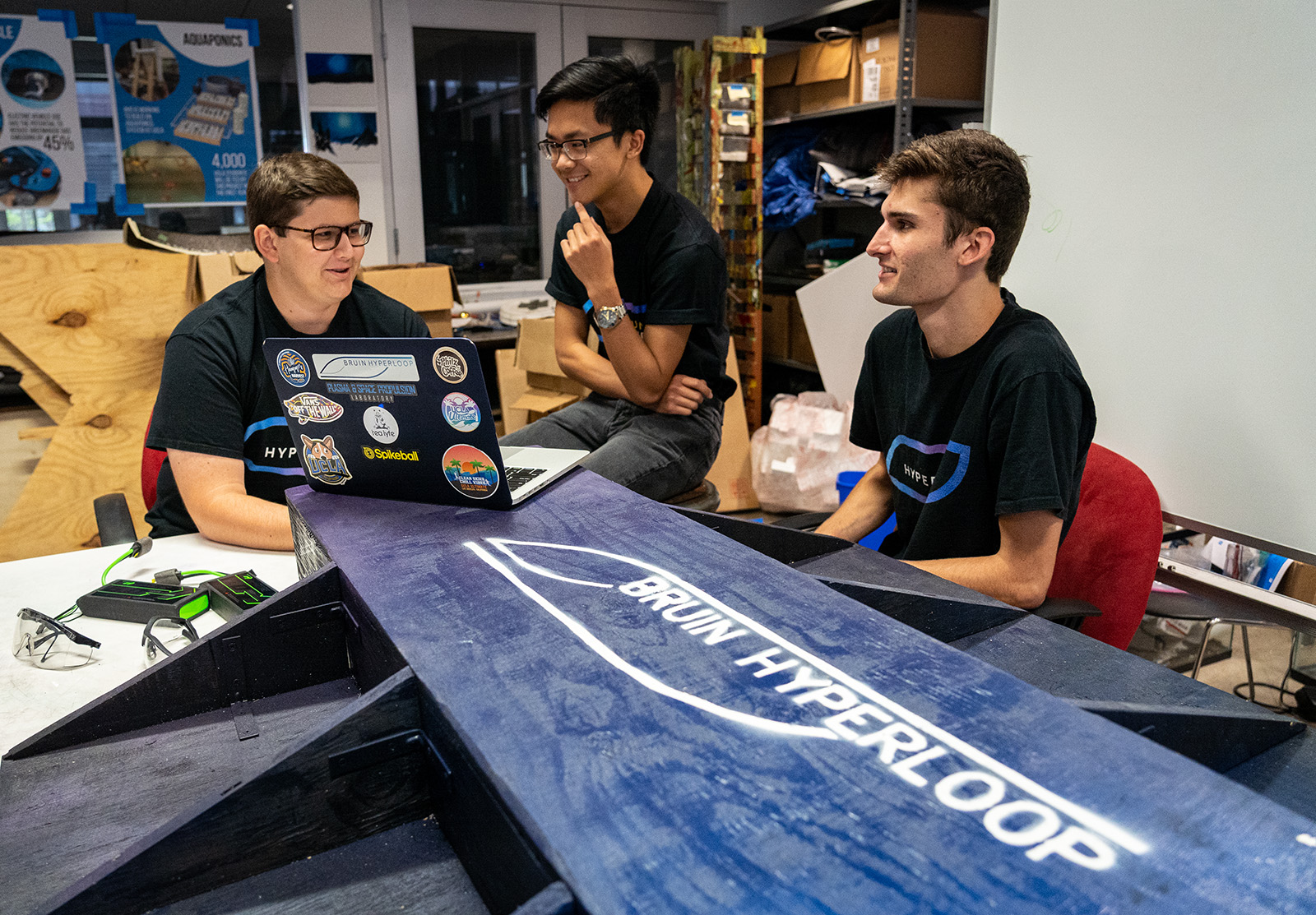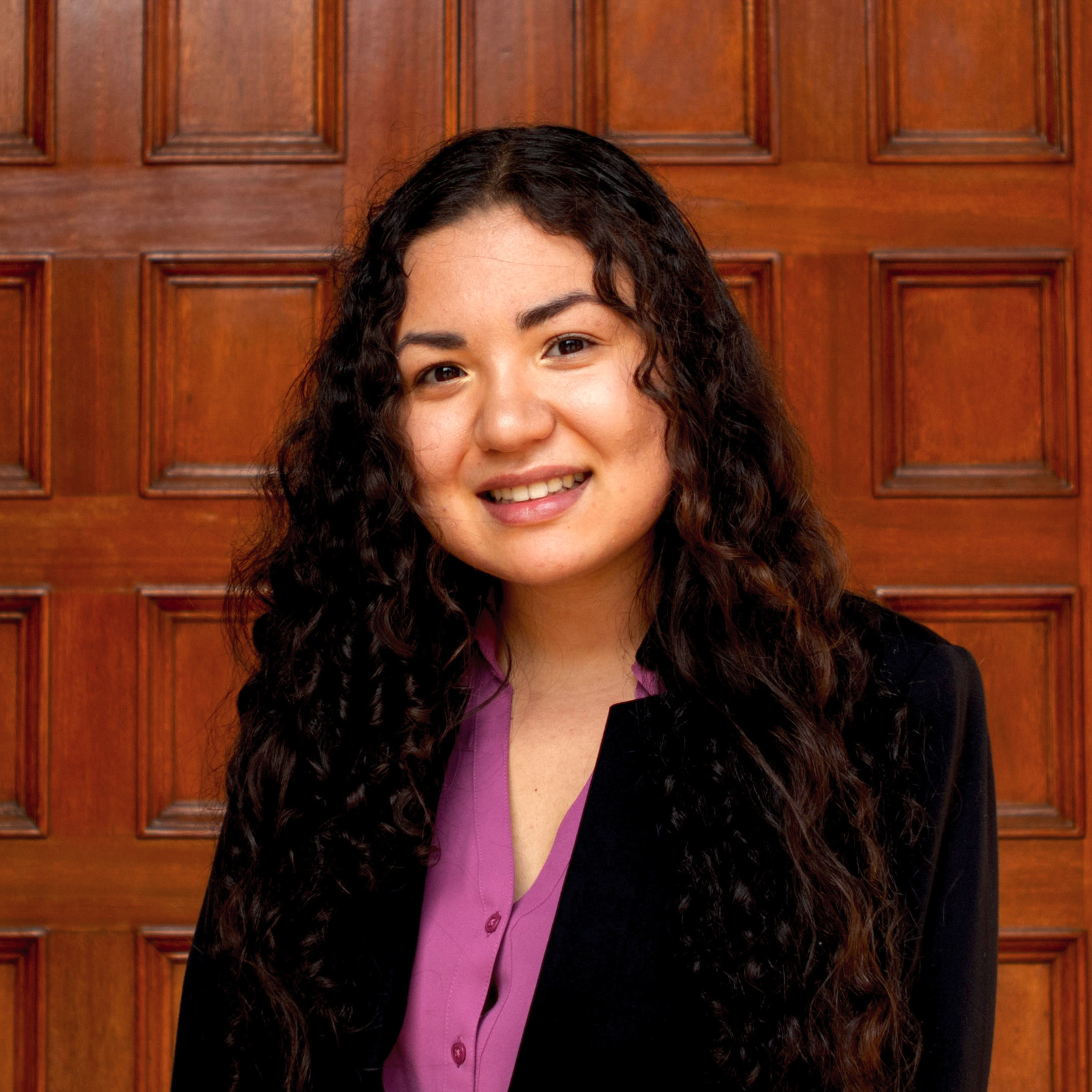Campus club Bruin Hyperloop hopes to compete in SpaceX’s annual competition

Bruin Hyperloop is a campus club attempting to create a model of Elon Musk’s proposed hyperloop technology for SpaceX’s annual competition. The hyperloop, which could potentially transport people in pods through near-vacuum tubes, could reduce congestion and the cost of transporting goods in Los Angeles, club members said. (Ellie Tsai/Daily Bruin)

By Emily MacInnis
Oct. 2, 2019 11:56 p.m.
Traffic can make traveling around LA slow, but Bruin Hyperloop wants to make it really fast.
Bruin Hyperloop is a UCLA club dedicated to building a hyperloop to compete in an annual competition hosted by SpaceX, an aerospace company founded by Elon Musk. The goal: to go as fast as possible while still being able to come to a stop.
Hyperloops are a mode of transportation first proposed by Musk in 2012, in which pods carrying people or goods travel through tunnels free of air resistance and friction. This allows the pods to travel very fast, potentially up to 745 miles per hour.
According to SpaceX, the pod could travel in a near-vacuum or low pressure environment inside the tunnel, which reduces air resistance and significantly decreases the amount of energy required to propel the pod. The pod is suspended above a track by a magnetic field, which eliminates friction.
The club was first founded in 2015 – the same year SpaceX first announced the competition – but had trouble getting new members, which hindered its progress. In 2018, Jordan Huynh, a third-year civil engineering student, founded a separate hyperloop club with his roommate, unaware of the original club. Because Huynh’s club had many members, the two clubs combined and became one organization in fall quarter in 2018.
Bill Patterson, vice president of electrical engineering for Bruin Hyperloop and a third-year electrical engineering student, said hyperloops can decrease traffic congestion and reduce carbon emissions.
He added hyperloops also may be useful for transporting goods because goods can be accelerated much faster than people can.
Goods are often transported by plane, which uses lots of fuel. Using a hyperloop instead would decrease the amount of energy required to transport them and would be better for the environment, Patterson said.
“It’s going to improve everybody’s lives, just based on how quickly you can get to and from places and how much it’s going to improve the air quality and carbon emissions,” said David Curry, president of Bruin Hyperloop and a fourth-year aerospace engineering student.
Bruin Hyperloop currently has around 25 active members. Members are placed on teams responsible for different aspects of building a hyperloop, such as braking, electronics and propulsion. It also has a business team, whose members are responsible for raising funds for the club, Huynh said.
The club hosts general meetings every couple of weeks for members across all teams to stay updated on the club’s progress, Curry said.
All members of Bruin Hyperloop will have hands-on experience building the hyperloop, Patterson said. This is different from some popular engineering clubs at UCLA, which are too large to allow all members to gain hands-on experience, he added.
“We want someone to be able to point to something on the pod and say, ‘Yeah, I designed that,’ regardless of whether you’re a first year or you’re a senior or even a graduate student,” Patterson said.
Nevertheless, Huynh said Bruin Hyperloop hopes to work with other engineering clubs at UCLA, such as Bruin Racing and the Institute of Electrical and Electronics Engineers.
“We want to teach them workshops about what we’re learning, and we want them to teach us workshops about what they’re learning,” Huynh said.
Last year, the club focused on creating the initial designs for the hyperloop, Curry said. This year, they have started building a large mockup chassis and a prototype carbon fiber chassis, the structural frame of the pod. They are focused on testing their design to make sure it works, he said.
“Our goal for this year’s competition is not only to make it into the competition, because this is such a popular competition around the world that it’s really hard to get into this in the first place, but actually compete at a high level in this competition,” Curry said.
Last year, the club raised $20,000 and earned sponsorships from Altium, Texas Instruments and ANSYS. Huynh said the companies’ backings motivate the team to succeed in building their hyperloop.
“We’re planning on taking that momentum (and) pushing it to this year as we start building, because these companies want to start seeing some results, UCLA wants to start seeing some results and we want to represent the school at this competition (and be at) the forefront of technology in SoCal area,” he said.
He added the introduction of the hyperloop has inspired and mobilized engineering students.
“It opens up a lot of college engineers to create something on their own using this idea,” he said. “It’s very freeing to be able to do our own thing and design and eventually (be able to) see this kind of stuff you put into mainstream.”
And in such a new field, students could be the ones having the breakthroughs, Curry said.
“(Hyperloops are) still really new technology, and it’s really cool how students can be on the leading front of this,” he said.


